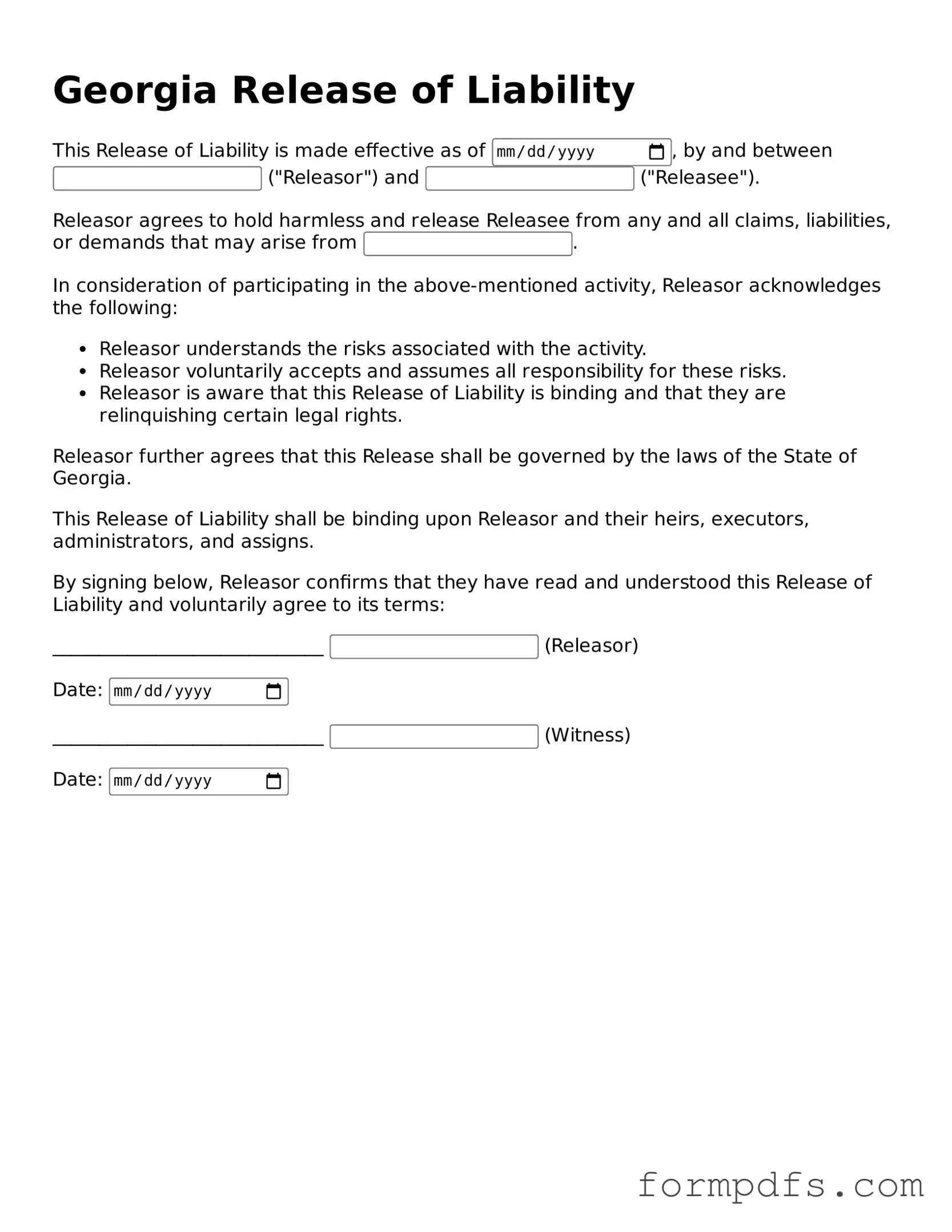What is a Georgia Release of Liability form?
A Georgia Release of Liability form is a legal document that protects an individual or organization from being held liable for injuries or damages that may occur during a specific activity or event. By signing this form, participants acknowledge the risks involved and agree not to hold the organizer responsible for any accidents or injuries that may arise.
When should I use a Release of Liability form?
This form is typically used in situations where participants engage in activities that carry inherent risks, such as sports events, recreational activities, or workshops. If you are organizing an event where injuries could occur, it is wise to have participants sign this form to limit your liability.
Is a Release of Liability form legally binding in Georgia?
Yes, a properly drafted and executed Release of Liability form is generally enforceable in Georgia, provided it meets certain legal requirements. It must clearly outline the risks involved and be signed voluntarily by participants. However, courts may not enforce a release if it is deemed overly broad or if it waives liability for gross negligence.
Can minors sign a Release of Liability form?
Minors cannot legally sign contracts, including a Release of Liability form. Instead, a parent or legal guardian must sign on behalf of the minor. It is essential to ensure that the form includes a section for the guardian’s signature to make it valid.
What should be included in a Release of Liability form?
A comprehensive Release of Liability form should include the names of the parties involved, a detailed description of the activity, a statement of risk acknowledgment, and a waiver of liability. It should also specify that participants are signing voluntarily and include a section for signatures and dates.
Do I need a lawyer to draft a Release of Liability form?
While it is not legally required to hire a lawyer, it is highly recommended. A legal professional can ensure that the form complies with Georgia laws and adequately protects your interests. This can help avoid potential legal issues down the line.
Can a Release of Liability form be revoked after signing?
Once signed, a Release of Liability form generally cannot be revoked unless there is a mutual agreement between the parties involved. If circumstances change significantly or if the form was signed under duress, it may be possible to challenge its validity.
What happens if someone gets injured despite signing the form?
If an injury occurs despite the signing of a Release of Liability form, the injured party may still pursue legal action, especially if there is evidence of gross negligence or willful misconduct by the organizer. The enforceability of the release will depend on the specific circumstances surrounding the incident.
